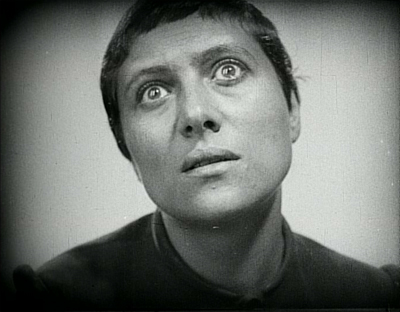The Passion of Joan of Arc (Carl Theodor Dreyer, 1928): France
Reviewed by William Conlin. Viewed on DVD.
 In 1981 a janitor’s closet in an Oslo, Norway mental institution yielded what may be one of the most pivotal discoveries in film history. For many years Carl Th. Dreyer’s masterpiece The Passion of Joan of Arc was thought to be lost. After watching this film, it sends a shiver up my spine to think of a world where this stunning piece of art doesn’t exist.
In 1981 a janitor’s closet in an Oslo, Norway mental institution yielded what may be one of the most pivotal discoveries in film history. For many years Carl Th. Dreyer’s masterpiece The Passion of Joan of Arc was thought to be lost. After watching this film, it sends a shiver up my spine to think of a world where this stunning piece of art doesn’t exist.
The Passion of Joan of Arc retells the trial and execution of French Saint Joan of Arc (Maria Falconetti). Shot almost entirely in close-ups the film follows Joan as a court of English clergymen attempt to break her spirit and force a confession of sin from her. Told from the original court documents, this film presents the final hours of Joan of Arc as a tragic, painful ordeal that will leave any viewer emotionally exhausted.
Technically, Carl Dreyer’s direction and Rudolph Mate’s cinematography are far beyond their time. The use of camera motion and “Dutch angles” hypnotizes and disorients the viewer, while the jump cut editing moves at a pace more like a film from today than from the early days of cinema. Shot on newly developed panchromatic film, The Passion of Joan of Arc was one of the first movies that could pick up every minute detail of the human face. Knowing this, Dreyer refused to use any make up on his actors, thus creating a harsh, gritty and extremely realistic feel.
Though critical for the whole film, during the second half of The Passion of Joan of Arc the editing takes on a whole new role. Using the symbolic power of juxtaposition, as Joan is tortuously having her hair chopped off the people outside her jail cell are treated to a circus performing and as Joan burns at the stake the same crowd is seen being brutally attacked by the occupying English soldiers. All the while the clergy looks on and allows the atrocities to take place.
Without a doubt the stand out aspect of this production is its star. Falconetti (who only appeared in one other film) delivers what I would regard as one of the greatest performances ever captured on film. Her intensity is only matched by her subtlety. To elicit a true performance, Dreyer went to absolute extremes with Falconetti. She was made to kneel on hard stone floors and shoot the same scene over and over again. During a scene where a “doctor” is treating Joan they decide to perform a bloodletting. The incision and subsequent removal of blood from Joan’s body were completely real (Falconetti had to endure the ordeal twice to ensure at least one good take). Due to the strain of this role Falconetti endured multiple emotional breakdowns and never performed on film again.
On a historical note, the film itself seemed to have endured nearly as much torture as its protagonist. The original print was lost to a fire and though Dreyer attempted to re-cut it from his many alternative takes, he went to his grave thinking no one would ever see the original film. As stated at the beginning of this review, in the early 1980’s a pristine copy was discovered in a rather unlikely place and thanks to the efforts of The Cinémathèque Française a restored and digitally remastered copy is available from The Criterion Collection. Accompanied by Richard Einhorn’s Voices of Light, this edition is the only true way to watch this masterpiece.
Few films convey the sheer amount of willpower it takes to make them but in watching The Passion of Joan of Arc one can feel the blood, sweat and tears that literally went into making it. This truly is a film for the ages.
About this entry
You’re currently reading “The Passion of Joan of Arc (Carl Theodor Dreyer, 1928): France,” an entry on Student Film Reviews
- Published:
- 03.15.11 / 2am
- Category:
- Criterion Collection Films, DVD, Films, Silent films
7 Comments
Jump to comment form | comments rss [?] | trackback uri [?]